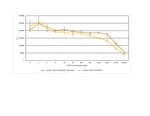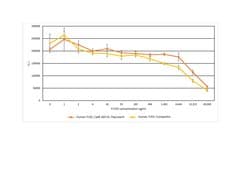missing translation for 'onlineSavingsMsg'
Learn More
Learn More
Gibco™ Human TLR-3 Recombinant Protein, PeproTech®
Click to view available options
Cantidad:
100 μg
2,5 x 200 μg
2.5 x 200 μg
200 μg
25 μg
5 μg
5 x 200 μg
5 x 200 μg
Tamaño de la unidad:
1 miligramo
100 microgramos
200 microgramos
25 microgramos
5 microgramos
500 microgramos
paquete de 5
Descripción
160-01-1MG will be provided as 5 x 200 μg (160-01-200UG). 160-01-500UG will be provided as multiple 100 μg (160-01-100UG) and 200 μg (160-01-200UG) vials. Recombinant Human TLR-3 is 77.4 kDa glycoprotein containing 681 residues which comprise the TLR-3 extracellular domain. This product is shipped at ambient temperature. For storage, handling and reconstitution information, please see the lot-specific Certificate of Analysis
TLR3 (Toll-like receptor 3, CD283) is a member of the Toll-like receptor (TLR) family which plays a fundamental role in pathogen recognition and activation of innate immunity. TLRs are highly conserved from drosophila to humans and share structural and functional similarities. TLRs recognize pathogen-associated molecular patterns (PAMPs) that are expressed on infectious agents, and mediate the production of cytokines necessary for the development of effective immunity. The various TLRs exhibit different patterns of expression. TLR3 is most abundantly expressed in placenta and pancreas, and is restricted to the dendritic subpopulation of the leukocytes. TLR3 recognizes dsRNA associated with viral infection, and induces the activation of NF-kappaB and the production of type I interferons. Further, TLR3 may play a role in host defense against viruses, and the use of alternative polyadenylation sites to generate different length transcripts has been noted for the TLR3 gene. Like its counterparts in Drosophila, TLRs signal through adaptor molecules and could constitute an important and unrecognized component of innate immunity in humans. The TLR family is a phylogenetically conserved mediator of innate immunity that is essential for microbial recognition. TLRs characterized so far activate the MyD88/interleukin-1 receptor-associated kinase (IRAK) signaling pathway. TLR3 is the only human TLR which does not utilize MyD88 as an adaptor molecule instead utilizing TRIF in a signaling path which results in downstream activation of IRF-3 and NF-kB. TLR3 activation leads not only to Type I interferon induction but also to other inflammatory cytokines which result in DC maturation. TLR3 is known to recognize viral double-stranded (ds) RNA, a molecular pattern associated with viral infection. Recently it has been shown to recognize viruses such as Influenza A and West Nile Virus and can mediate entry of at least West Nile Virus.

Especificaciones
Especificaciones
| Número de acceso | O15455 |
| Para utilizar con (aplicación) | Functional Assay |
| Formulación | protein with no preservative |
| ID de gen (Entrez) | 7098 |
| Peso molecular | 77.4 kDa |
| Nombre | Human TLR-3 |
| Cantidad | 25 μg |
| Fuente | HEK293 cells |
| Estado normativo | RUO |
| Concentración de endotoxinas | <1 EU/ μg |
| Mostrar más |
Corrección del contenido de un producto
Proporcione sus comentarios sobre el contenido del producto rellenando el siguiente formulario.
Título del producto
Gibco™ Human TLR-3 Recombinant Protein, PeproTech® >
¿Detecta una oportunidad de mejora?Comparta una corrección de contenido







